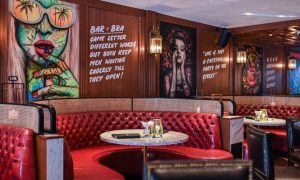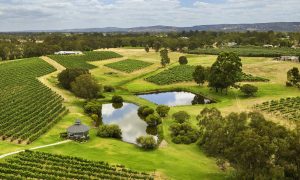The cities of George Town and Malacca both owe their multicultural legacy and unique heritage to the Straits of Malacca, among the most important shipping lanes in the world. Join Pat Fama as he unearths the fascinating history of trade that shaped these twin port cities.
Wandering round Malacca and George Town, it is easy to see why these two cities were awarded World Heritage status by UNESCO. Or at least the most obvious reason: all those fantastic historic buildings. But built heritage was only one of the factors which helped secure the UNESCO listing.
The vibrant multicultural nature of both cities was also a key reason, as was their role as trading settlements. It would be a mistake to see these qualities in isolation though, as all three are bound together, as explained in the UNESCO citation:
“Malacca and George Town represent exceptional examples of multicultural trading towns in East and Southeast Asia, forged from the mercantile, and exchanges of Malay, Chinese, and Indian cultures and three successive European colonial powers for almost 500 years, each with its imprints on the architecture and urban form, technology, and monumental art.”
It’s said that the three most important things to consider when buying property are location, location, location. The same could well be said about the relative success of trading towns. Both Malacca and George Town are located along the Straits of Malacca, a crucial maritime crossroads between East and West, for some two thousand years.
We often think of global trading networks as being a feature of modern times. But as early as the 1st century, Ancient Rome was a huge consumer of goods from the East, particularly silk and spices. At roughly the same time, an ancient civilisation in Kedah was smelting and exporting iron, and quite possibly other goods too.
The most sought after goods travelled vast distances, carried in a series of “relays” between major ports. Shipping relied on the prevailing winds, making safe harbours worth their weight in gold. Sitting between Europe, the Middle East and India to the west, and between Southeast Asia, China, and Japan to the east, is a great location by any reckoning.
For many Malays, the Malacca Sultanate represents a golden age, not least because its fall was followed by centuries of colonial rule. From its founding by a Hindu prince, Parameswara, in about 1400, to its defeat by Portugal in 1511, trade was of vital importance.
Passing ships were effectively obliged to call at Malacca, in return for safe passage through the Straits. At the height of the Sultanate’s power, it’s said that as many as two thousand ships thronged the harbour. And even if this is an exaggeration, there is no doubting that for time, Malacca was an extremely busy port.
The history of civilisation within the Malay Peninsula up to that point had been heavily influenced by Indian culture, particularly in terms of religious belief. The rise of Malacca saw Islam replace Hinduism and Buddhism, and the Malay language became an important lingua franca, albeit with many borrowed words.
Another important development was the arrival of what were probably the first Chinese settlers in what is now Malaysia. Many married Malays, beginning the Baba Nyonya or Peranakan culture. Many of the distinctive shophouses and mansions built by this community still grace Malacca today.
As well as garnering wealth, the Sultanate’s trading success attracted the attention of European colonial powers, beginning with the Portuguese. Little built heritage remains of their rule, apart from fragments of their impressive fortifications. In social and cultural terms however, the Portuguese legacy is much more enduring, most notably in Malacca’s Eurasian community.
Although trade declined after the fall of the Sultanate, the port was still considered a big enough prize for the Dutch to mount several attempts to capture it. They finally succeeded in 1641 and continued to rule Malacca for the better part of two centuries. One look at the impressive buildings left behind by the Dutch suggests that plenty of trading profits were still flowing into the city.
From 1786, Malacca faced a major trading rival, in the newly established British settlement of Penang. Although George Town was never to be quite the success envisaged by its founder, Captain Francis Light, making it a free port gave it a distinct advantage over Malacca, which was also facing problems with silting.
George Town became not just a vital stopping off point for China-bound ships of the (British) East Indies Company, it also served as a thriving port for trade with Southeast Asia and India. Along with merchants, thousands of other settlers flocked to Penang, including Chinese, Indians, Malays, Javanese, Arabs, Eurasians, and Siamese.
The grand mansions which were built by merchants in the early 19th century were a sign of the city’s economic success. But the golden period was not to last for long. Soon enough, it was eclipsed by Singapore, which was established as a British trading settlement in 1819.
According to recent research of shipping logs, George Town’s decline at Singapore’s expense was not as clear-cut as often assumed. While it did lose out in terms of the largest EIC vessels, it remained a thriving centre for smaller vessels, trading shorter distances. Indeed, Penang is still a busy port today.
During their respective golden eras, both cities earned massive riches from trade. But the long economic decline they suffered afterwards cannot be regarded as a wholly bad thing. Most significantly, it meant that neither Malacca nor George Town could afford large-scale redevelopment of their historic centres.
Trade was hugely important to the development and character of both George Town and Malacca, especially in their multicultural nature. And it was the varied communities who settled both cities who were responsible for the remarkable built heritage which remains today.
This article was written by Pat Fama for The Expat magazine.
Source: The Expat July 2012
Click here for your free print subscription and free delivery of The Expat.


















